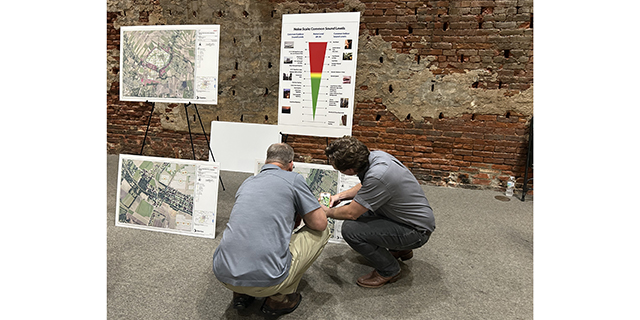OVERTIME OUTDOORS: In 2019-20, expect 1 less pintail, maybe 1 less scaup
Published 12:45 am Sunday, September 2, 2018
Louisiana’s waterfowl study leader returned from the annual Mississippi Flyway Council meeting recently in Winnipeg, Manitoba, Canada, and immediately started preparing a report on the migratory waterfowl status for 2018-19 to present this week to the Louisiana Wildlife and Fisheries Commission.
Larry Reynolds, a veteran waterfowl biologist with the state Department of Wildlife and Fisheries, has sobering news for the commissioners and waterfowlers who hunt ducks in the Sportsman’s Paradise. His update on the pond count and duck numbers in the breeding grounds of North America reflects the U.S. Fish and Wildlife Service report Aug. 20 on 2018 Trends in Duck Breeding Populations after U.S.F&WS surveys conducted in May and early June.
Total pond estimate for the U.S. and Canada combined was 5.2 million, 14 percent below that of the 6.1 million in 2017 but the same as the long-term average of 5.2 million, Reynolds said Thursday afternoon from his Baton Rouge office. While overall duck numbers remain high, the estimated number of 41.2 million breeding ducks in the traditional survey area is 13 percent below last year’s estimate of 47.3 million and 17 percent above the long-term average, he said, based on the U.S.F&WS report.
The LWFC approved the LDWF’s waterfowl hunting season dates and regulations for 2018-19 in April, so Reynolds’ focus at Thursday’s commission meeting will include 2019-20.
“Sooner or later, it’s got to get dry on the (Canadian) prairies. We have to tighten our belts,” he said.
For example, he said, duck hunters who love to take two pintails in the bag limit, which is the case this season, face the strong possibility the bag limit will be one pintail the following season.
“Unless the population recovers. It may be one for a while,” he said.
Why? The pintail population recently reported was at an estimated 2.4 million birds, 18 percent lower than the same U.S.F&WS survey in 2017 and 40 percent below the long-term average.
And for those who enjoy the three-bird bag limit on scaup, those days may be numbered after this season.
“The scaup population is only 100,000 away from us having to cut the bag limit,” Reynolds said.
The scaup numbers reported recently by the feds total 4 million, 9 percent below 2017 and 20 percent above the long-term average.
Also on the agenda Thursday for Reynolds is to present the state agency’s position on two similar bills introduced earlier this summer in Congress, SB 2942 by Sen. Cindy Hyde-Smith, R-Mississippi, and HR 6013 by Rep. Rob Bishop, R-Utah.
Briefly, the bills ask for each and every waterfowl season to end Jan. 31, add two days of duck hunting for youths, military veterans and active military personnel outside the season and to prohibit the Secretary of the Interior from decreasing the length of the hunting season and the bag limit as compared to 2017-18.
Reynolds said the LDWF has taken a position against the proposed legislation and has sent letters stating that stance to U.S. Sen. John Kennedy, R-Louisiana, and U.S. Sen. Bill Cassidy, R-Louisiana. The department’s letter is similar to the one the Mississippi Flyway Council sent to Congress, he said.
“We have a process for setting hunting regulations. It’s not done through legislation,” Reynolds said.
He noted that Mississsippi has been petitioning for a Jan. 31 closing date for four years.
Reynolds also pointed out that there are youth waterfowl hunting days set aside already for the East Zone, West Zone and Coastal Zone in the Sportsman’s Paradise.
DON SHOOPMANis outdoors editor of The Daily Iberian.





